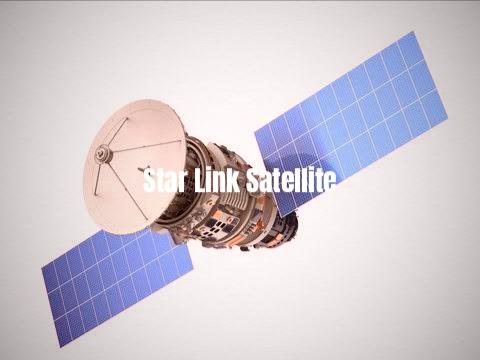What is Starlink and How It Works in Bangladesh?
In recent months, the term Starlink has been trending heavily across social media and tech forums in Bangladesh. The satellite-based internet service by SpaceX, founded by Elon Musk, is set to begin trial operations in Bangladesh from April 9, 2025. As the nation steps closer to adopting next-gen connectivity, many people still ask: What exactly is Starlink? How does it work? And is it really worth the hype, especially in a country like Bangladesh?
In this blog, we’ll break down how Starlink works, what makes it different, the pricing, and its implications for Bangladesh.
What is Starlink?
Starlink is a satellite internet constellation project developed by SpaceX. Its primary goal is to provide high-speed, low-latency internet access to underserved and remote areas around the globe using Low Earth Orbit (LEO) satellites.
Unlike traditional broadband services that rely on physical infrastructure like fiber optics or mobile towers, Starlink delivers internet connectivity directly from space to Earth using thousands of small satellites that orbit the Earth at a much closer distance than traditional geostationary satellites.
How Does Starlink Work?
Starlink uses a constellation of satellites located roughly 550 km above Earth in Low Earth Orbit (LEO). Traditional satellite internet relies on Geostationary satellites placed at 35,786 km altitude, which results in high latency—making real-time tasks like gaming or video calls difficult.
But with LEO satellites, the signal travels a much shorter distance, significantly reducing latency to 25–60 milliseconds, comparable to many terrestrial broadband providers.
Here’s how the Starlink process works:
- User Terminal (Dish): A user installs a satellite dish at home or office (similar to a TV antenna).
- LEO Satellites: The dish connects to one of the thousands of Starlink satellites overhead.
- Space Lasers: Each satellite is equipped with three space lasers, allowing satellites to communicate and pass data across the network without relying heavily on ground infrastructure.
- Ground Stations & Backhaul: Satellites communicate with ground stations, which connect to the internet backbone.
This system enables global coverage, including regions where fiber, cable, or mobile internet is unavailable or unreliable.
Is Starlink New to Satellite Internet?
No—satellite internet has existed for decades. Companies like HughesNet, Viasat, and ACS have long provided connectivity through Geo-Stationary Earth Orbit (GEO) satellites. However, those satellites orbit much farther from Earth, causing high latency (600+ ms) and lower performance.
Starlink’s innovation lies in:
- LEO satellites for lower latency
- Massive satellite constellation for coverage
- Direct-to-user connectivity with no local ISP dependency
- Laser-based data transfer between satellites
As of now, Starlink has launched over 6,994 satellites and provides service in 100+ countries.
Starlink Pricing in Bangladesh
Starlink is not yet widely available in Bangladesh, but trial access is expected to begin from April 9, 2025, during the Bangladesh Investment Summit, inaugurated by Nobel Laureate Dr. Muhammad Yunus.
To use Starlink, customers need a hardware kit, which includes:
- A user terminal (dish)
- A router
- Mounting gear (kickstand)
- Cables and power supply
Estimated Price in Bangladesh:
- Starlink Kit Cost: $350–$599 (Approx. BDT 43,000–74,000)
- Monthly Subscription: $120 (Approx. BDT 15,000)
Internet Speed:
- Download: 25–220 Mbps (most users get over 100 Mbps)
- Upload: 5–20 Mbps
- Latency: 25–60 ms
Who Will Benefit from Starlink in Bangladesh?
Starlink could be a game-changer for:
- Remote villages and chars without fiber optics
- Disaster-prone areas where network lines often go down
- Mobile workers, travelers, and nomads
- Boats, airplanes, and off-grid businesses
- Military and emergency services needing resilient communication
However, the high cost puts it out of reach for the average Bangladeshi household for now.
Starlink’s Legal and Global Status
Though Starlink operates in over 100 countries, it’s not free from challenges:
- India (1.5 billion people) hasn’t licensed it yet.
- China and Russia banned Starlink due to national security concerns.
- Italy and France temporarily halted services citing environmental impact.
- In South Asia, only Bhutan has officially allowed Starlink so far.
Regulatory approval remains a big hurdle. In Bangladesh, Starlink must comply with BTRC (Bangladesh Telecommunication Regulatory Commission) and national internet policies to roll out nationwide.
Why Starlink Matters for Bangladesh
In a country with over 130 million internet users, connectivity gaps still exist in:
- Coastal regions
- Hill tracts
- Border zones
- Flood-prone and rural areas
While mobile internet is widespread, speed and reliability are inconsistent, especially during natural disasters.
Starlink offers a potential solution to bridge these gaps—delivering high-speed internet even in hard-to-reach regions without waiting for fiber optic cables or mobile tower expansion.
Challenges and Limitations
Despite its promise, Starlink faces some real challenges in Bangladesh:
- Affordability: With setup and monthly fees exceeding BDT 50,000+ in the first year, it’s expensive for regular users.
- Technical Setup: Installation requires clear skies and obstruction-free zones.
- Policy & Licensing: Requires regulatory approval, spectrum clearance, and import permissions.
- Weather Dependency: Heavy rain or storms may affect signal quality.
Is Starlink the Future of Internet in Bangladesh?
The launch of Starlink in Bangladesh marks a milestone in our digital journey. While it’s not a replacement for mainstream broadband yet, it introduces a new frontier in connectivity, especially for the remote and underserved population.
Although current costs may restrict mass adoption, technological advancements and market competition could eventually make it more accessible in the coming years.
As Bangladesh gears up for the fourth industrial revolution, Starlink could be a vital tool in ensuring no one is left behind—digitally.
What Do You Think?
Do you believe Starlink will reshape Bangladesh’s internet future? Or will high costs and regulatory issues delay its impact?

